Sigma 18-200mm f/3.5-6.3 DC OS
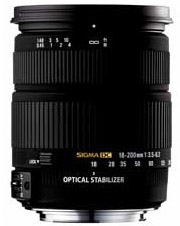 Sigma 18-200mm Specification
Sigma 18-200mm Specification
- Lens Name Sigma 18-200mm f/3.5-6.3 DC OS
- Focal length 18-200mm
- Optical Construction: 18-13 elements/groups
- Max Aperture: f/3.5-6.3
- Min Aperture: f/22
- Closest focus: 0.45m
- Filter Thread: 72mm
- Dimensions: 79x100mm
- Weight: 0.61kg
- Mount Sigma, Canon, Nikon(D)
- Price (SRP) £439.99
Sigma 18-200mm Build and Handling
This lens is surprisingly solid in its construction and is heavier again by half than its non-OS sibling. The difference is not just from the OS system though, with a better overall feel to it that encourages confidence in its abilities. Not that the lens is heavy, but it is certainly no plastic fantastic!
Two substantial, rubber embossed rings, one to operate the zoom and the other for manual focussing adorn the majority of the barrel. Both are nicely torqued with the focussing ring being the lighter of the two to use when in manual mode. Two control switches adorn the left of the barrel (Canon and Sigma fit) one for the AF on/off and the other for the OS on/off. Both are sturdy and have well protected collars. A smaller zoom lock switch also sits just to the left of centre. The zoom action extends the barrel by some 60mm on a double trombone that has virtually no play in it. The first of the trombone sections is helpfully marked with a reproduction ratio that goes to a maximum of 1:3.9.
Another good point is that the front element does not rotate during use, a boon to those using effect and Grad filters.
The lens is only the second in Sigma’s line-up that offers their Optical Stabilisation (OS) system and, unusually, Sigma make no claims as to how much advantage it will give. When pushed, they say it is good for two stops, however, we found this to be a very conservative estimate and managed four stops on a regular basis. The system also automatically detects panning movements, compensating for just the one plane when necessary. The lens comes supplied with protective caps and a bespoke lens hood as standard.
Focus speed is reasonable for the type, with a relatively quiet motor that gets there without much delay. The lack of an HSM motor will be an annoyance to some Nikon owners, but it is highly likely that an HSM version in Nikon fit will be produced in the near future.
Sigma 18-200mm Optical Quality
The problem with superzooms is compromise. Getting the best results from what is a stretching of optical laws to the extremes. At a zoom ratio of 11.1:1, this 18-200mm optic is a result of some well-balanced compromises though. As is usual in this type of lens, the wide end is better than the longer end in general, but does suffer some distortion. Barrel distortion is just evident at the wide end of the zoom, turning to negligible pincushion by the time the telephoto end is reached.
The lens benefits from stopping down throughout the zoom range with peak performance being reached between f/8 at the shorter lengths while it improves still further to f/11 and beyond at the longer focal lengths. It is usable throughout the range though.
Chromatic aberrations have been fairly well sorted too, with evidence at the edges improving to the state where they are not visible once a couple of stops down.
Generally, for the type of lens, it is not a bad performer.
 |  |
| Sigma 18-200mm OS 18mm at f/8 | Sigma 18-200mm OS 200mm at f/8 |
 |  |
| Sigma 18-200mm OS 18mm at f/3.5 | Sigma 18-200mm OS 200mm at f/6.3 |
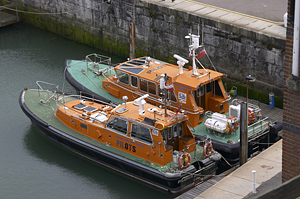 | 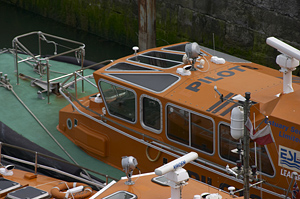 |
| Images shot at 63mm and 200mm respectively, showing versatility of superzooms | |
 |  |
| Shot hand held at 200mm with a shutter speed of 1/13th second shows the effectiveness of the Sigma OS system | |
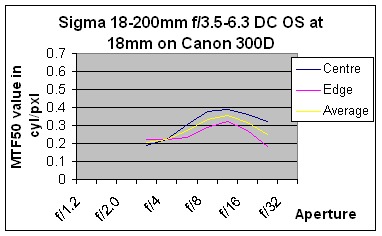
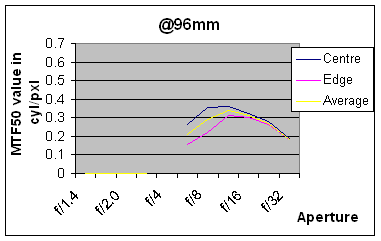
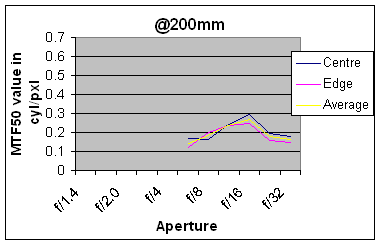
Sigma 18-200mm Verdict
Sigma must be congratulated for being the only independent to offer in-lens stabilisation and in this case, one that really works. It is not really required at the short end of the range but does become very handy as the focal length increases. With commendable optical performance for its type, the lens is well worth consideration.
In summary, the positive points of the Sigma 18-200mm f/3.5-6.3 DC OS are:![]() Good stabilisation system
Good stabilisation system![]() Good build quality
Good build quality![]() Decent optical performance for type
Decent optical performance for type![]() Reasonably price
Reasonably price
![]() The negative points are:
The negative points are:![]() Heavier than some
Heavier than some![]() Some CA around the edges at wider apertures
Some CA around the edges at wider apertures ![]() Barrel distortion at the wide end.
Barrel distortion at the wide end.
The Sigma 18-200mm OS costs from £440 and is available at the ePHOTOzine shop here
So I bought it a bout a couple of months a go in Japan when it just out and I was disappointed with all photos I shot with it.
I returned and bought a D80 for with the Nikon's famous 18-200VR for walk around and travel light solution.
Well, how can I say, the Nikon is so nice and cool while this Sigma is ?
I think if you need an ultra zoom , get the Nikon with a Nikon body , this Sigma is nothing like the Nikon, focuses slow , not sharp , not really well designed.
Also, the Sigma AF at least my 2 copies were so capricious at best.
I think this lens also is too heavy for what it is, it is heavier than my Canon EF-S17-55 f2.8 IS or 24-105f4L IS, both of them are pro quality lenses not cheap travel lenses.
However all the weaknesses that others mention I could blame the camera for, I have a Canon EOS 350. I tried the Nikon D80 and this was significantly better in my opinion than my camera or the majority of cannon offerings in this price range. I also tried it with the Sigma lense on and they worked well together and this suggests that this is a very good lense for the money.
When will Cannon make a camera as good as the nikon??
Add your message
Please login here or if you've not registered, you can register here. Registering is safe, quick and free.
photodo Stats
428 MTF tests
74 in-depth photodo reviews
100+ users join each day
Help the lens community by reviewing or rating a lens today via our lens search
Latest Lens Reviews
- Chinon 28mm f/2.8 Vintage Lens Review
- Canon EF 70-200mm f/4L IS II USM Lens Review
- Samyang AF 85mm f/1.4 EF Review
- Sigma 70mm f/2.8 DG Macro Art Review
- Samyang AF 24mm f/2.8 FE Review
- Meike 50mm f/1.7 Review
- Tamron 70-210mm f/4 Di VC USD Review
- Lensbaby Burnside 35mm f/2.8 Review
- Asahi Super Takumar 50mm f/1.4 Review
- Asahi Super-Multi-Coated Takumar 135mm f/3.5 Review
